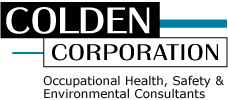In the summer of 2015, a legionellosis outbreak attributed to Legionella bacteria exposure from a contaminated cooling tower caused 16 deaths in the South Bronx.
This prompted New York State (NYS) and New York City (NYC) to enact emergency regulations in 2015 that focused on cooling tower maintenance as the most effective approach to managing Legionella exposure risk. Both sets of regulations became final in 2016, and are cited as:
Both the NYS and NYC regulations require the following for all cooling towers:
- Registration of towers online with NYC/NYS
- Inspection every 90 days while in operation by a Competent Person (Certified Industrial Hygienist, Professional Engineer or Certified Water Technologist)
- Legionella culture testing of cooling tower water every 90 days while in operation
- Development of a cooling tower maintenance program and plan (due by September 1, 2016)
- Certification of the tower by a Competent Person, as defined above (due by November 1, 2016)
There are also additional requirements for healthcare facilities that include inspections and testing of potable water systems.
Though these regulations are not applicable outside of NYS/NYC, they are based largely upon recommendations in ANSI/ASHRAE Standard 188-2015, “Legionellosis: Risk Management for Building Water Systems,” which is recognized as best practice for managing legionellosis risk from facility water systems.
A successful Legionella exposure risk management program for your cooling towers should include the following key elements:
- Routine inspections and bacteriological testing by facilities management staff (typically dip slides or HPC analysis of cooling tower water samples)
- Input from your water treatment vendor regarding selection and management of biocides, corrosion and scale inhibitors, and other water treatment chemicals
- Periodic third-party inspections and Legionella culture testing by a competent person
- Periodic disinfection and cleaning during seasonal shutdowns or after unsatisfactory inspection or testing results
Though relatively rare, Legionnaires’ Disease has been increasing in New York City and around the country. From 2007-2018, there was an 11.9% average increase in the rate of Legionnaires’ Disease in New York City, [1] and according to the U.S. Centers for Disease Control and Prevention (CDC), 15 jurisdictions across the U.S. reported average annual percent increase in cases that was higher than the increase in New York City.
A proactive approach to managing building water systems is the most effective way to mitigate Legionella exposure risk in your facility. Colden has Certified Industrial Hygienists in each of our offices who can provide guidance with regulatory compliance and Legionella exposure risk management.
[1] New York City Department of Health and Mental Hygiene, Legionnaires’ Disease Annual Surveillance Report, 2018.

